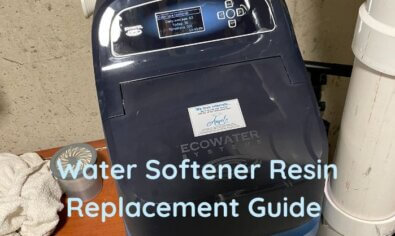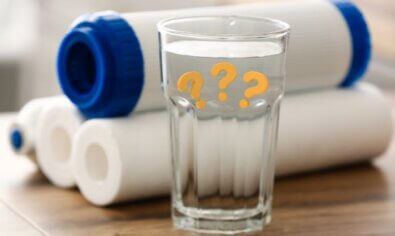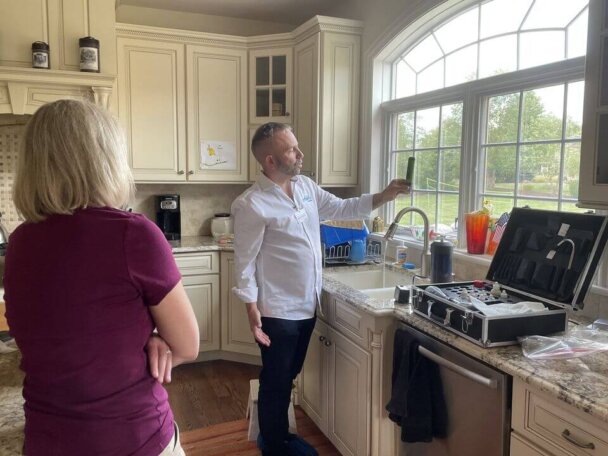How to Remove Radium from Drinking Water for Healthy Living
In this article, you’ll learn the following:
• Radium is one of many carcinogens you might encounter in your day-to-day life.
• As they decay, radium’s isotopes release beta particles that cause dangerous mutations in the body’s cells and tissues.
• Radium frequently contaminates groundwater, especially in the deepest aquifers.
• NSF 44-certified water softener systems and NSF 58-certified reverse osmosis systems are best for removing virtually all radium from drinking water.
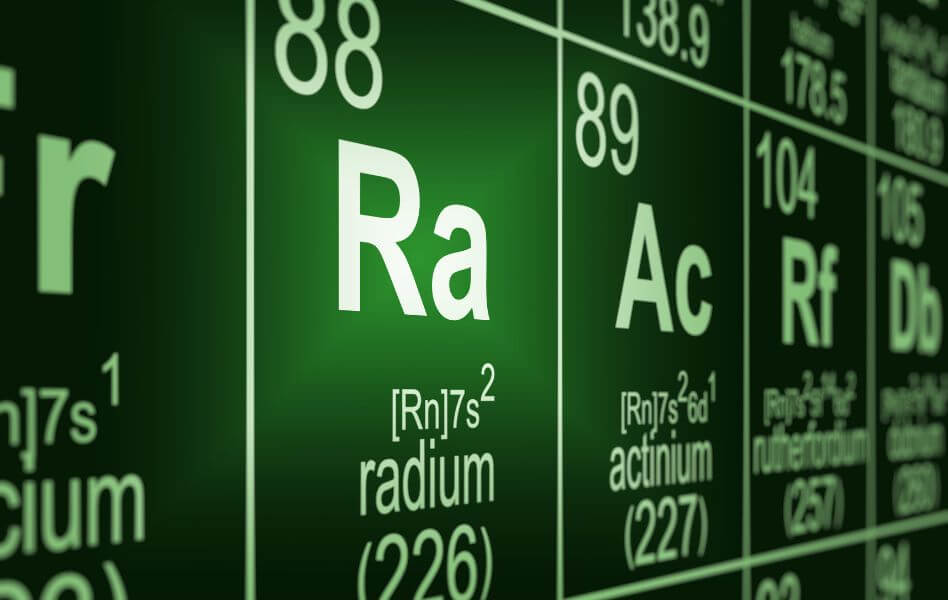
Radium is nothing more than an element on the periodic table that occurs naturally in the Earth’s crust. So, how concerned should people be about it? Is it worth it to try to get it out of your water?
In this post, we will show you why radium is more than worthy of your concern. Then we’ll lay out simple steps you can take to remove this dangerous element from your drinking water for good!
What is Radium?
Radium is an element that occurs naturally in rocks and soil among the Earth’s crust, leaking into groundwater supplies.
Radium can come in many forms called isotopes. In the regions we serve—Northern Illinois and Southeast Florida—the most common isotopes of radium are radium-226 and radium-228. The primary form of radiation that emanates from these materials consists of beta particles, which can cause mutations in the body.
With a half-life of 1600 years, radium-226 is a decay product of uranium, which is also present in the Earth’s crust. It enters drinking water through rocks that dissolve into aquifers. As a low-energy beta emitter, it releases radioactive particles as it decays. Once the body absorbs these particles, they can damage cells and tissues with further mutations.
Radium-228 is another isotope of radium that pervades in small amounts across the environment. It’s also a decay product of other elements, like thorium. The key difference is that it has a half-life of only 5.75 years. This is much less time for half the isotope to break down. It’s also a low-energy beta emitter that enters water supplies through aquifers.
How Does Radium Get into Water?
Radium might be impossible to see, taste or smell, but we know it can come from natural and artificial sources alike. The element frequently bypasses water treatment plants and heads straight to homes across Chicagoland.
Here’s a breakdown of where your water supply’s radium may have come from:
Most Sources are Natural
Water from deep aquifers is most likely to contain enough radium to exceed the EPA’s standards. The granite bedrock that surrounds these aquifers contains radium that leaches into the water on which cities like Barrington, IL, and West Palm Beach, FL, depend almost exclusively.
Private wells access shallow aquifers and are less likely to contain radium. However, the EPA has detected radium in shallow, private aquifers as well as deep, public aquifers. Humans can’t see, taste or smell radium, so there’s no way to know your water is free from radium without a professional test.
Some Radium Comes from Pollution
Radium isotopes are less likely to come from pollution, but that’s not out of the question. Human-caused sources of contamination include mining, medical waste and accidental release from nuclear reactors, but most radium occurs as naturally as any other element.
How Much Radium in Drinking Water Is Dangerous?
According to the Environmental Protection Agency (EPA), the saturation of radium in water can be no greater than 5 pCi/L (picocuries per liter), which is below the exposure at which research has observed symptoms. However, radium poisoning might be more common than the EPA suggests because if radium stops exceeding limits within the year, it still adheres to the EPA’s standards.
In the interest of human health, the Environmental Working Group (EWG), a nonprofit watchdog organization, sets much more stringent guidelines than the EPA. The EWG’s limit for radium is one hundred times stricter than the EPA at 0.05 pCi/L. According to the EWG’s database, multiple towns in Northern Illinois have tested over this limit in recent years, including
- Chicago
- Barrington
- Elgin
- Rockford
- Huntley
- And more
The same goes for Southeast Florida. Some of the cities that have exceeded the EWG limit in this region include:
- Jupiter
- Coral Springs
- Lantana
- And more
What are the Effects of Radium in Drinking Water?
Radium can cause people to develop bone, liver or breast cancer after years of exposure, but this is only the tip of the iceberg. Studies on industrial workers who’ve experienced consistent exposure to radium suggest that it may cause:
- Anemia
- Cataracts
- Tooth fractures
- Birth defects
- Kidney damage
- Suppression of the immune system
While more research is necessary to confirm the precise effects of radium on the human body, we know enough to understand how dangerous it is.
How Does Radium Get into the Body?
No one will experience symptoms from touching water that contains radium. Cooking with the water and drinking it are a different story. Beta particles are too weak to pierce our skin, but if we ingest them, they can absolutely damage internal tissue.
As with calcium absorption, the digestive system excretes most of the radium, but harmful amounts still move into other tissues, especially bones. Inhaling water vapor with radium in it can also cause symptoms because the lungs disperse materials throughout the body as the stomach does.
Angel Water Now Offers Free Water Tests!
Don’t Guess, Test! Get Your Free Water Test Now and Take Control of Your Water Quality.

We encounter radioactive materials in our daily lives. X-rays expose you to radiation. The potassium you get from bananas and Brazil nuts is enough to qualify as exposure. The point is that radium’s radiation doesn’t work alone, which is all the more reason to limit it. In-home water systems can help to decrease radiation significantly.
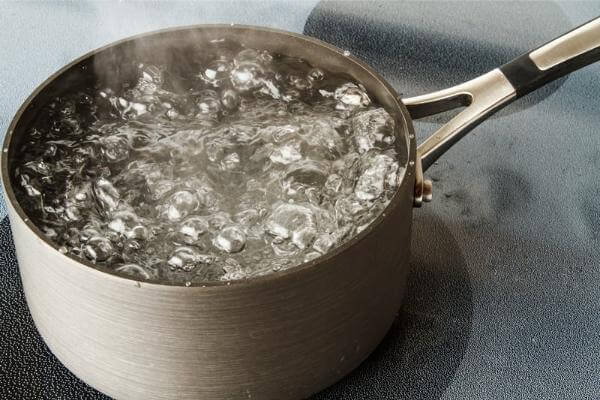
How Can I Tell if I Have Radium in My Water?
If radium is invisible to the human eye, tasteless to the human tongue and odorless to the human nose, how is anybody supposed to know it’s there? The only way to know what’s in your water is to perform a water test.
You need a bit of training and scientific background to perform a water test, but testing water is a major part of our repertoire. It’s practically routine for us, and we’d be happy to let you know as to whether there’s radium in your drinking water.
How Can I Remove Radium from Drinking Water?
The best way to remove radium from your water is to invest in the right water treatment equipment. Water softener systems and reverse osmosis systems can remove 90% of radium, lowering the risk of cancer, among other symptoms.
Here’s an overview of each of these systems and why they might be right for you:
NSF 44-Certified Water Softeners Remove Radium and Soften Water
If you have hard water with a lot of radium in it, water softeners with NSF 44 certification are your best option.
Hard water is water that contains too much calcium and magnesium. High water hardness can remove the color from clothes, damage dishwashers, leave stains on dishes and cause brittle hair. A water softener’s primary purpose is to reduce this hardness through ion exchange, the chemical process we mentioned above. But some water softeners can also remove radium.
As you search for water softeners, note the key difference between salt-based and salt-free water softeners. Salt-free water “softeners” only condition the water to keep sediment from sticking to pipes. This type will have no effect on the amount of radium in water.
If you’re interested in a water softener, make sure it has NSF 44 certification. To earn this certification, the best water softeners endure expansive tests that guarantee effectiveness, receiving a genuine seal of approval from the National Sanitation Foundation (NSF). Only NSF 44 certified water softeners are guaranteed to remove radium from your water.
NSF 58-Certified Reverse Osmosis Systems Remove Radium and Other Contaminants
If radium is one of multiple contaminants in your water, an RO system with NSF 58 certification is your best bet.
RO systems force water through a semipermeable membrane that removes contaminants, including radium-226 and -228. RO systems can also remove a wide variety of other dangerous toxins, including:
- Arsenic
- Chlorine
- Hexavalent chromium
- Iron
- Lead
- Mercury
- And more
As the best water softeners earn NSF 44 certification, the best RO systems earn NSF 58 certification. With close monitoring, the NSF puts these RO systems through similarly expansive tests to make sure they can do their jobs perfectly.
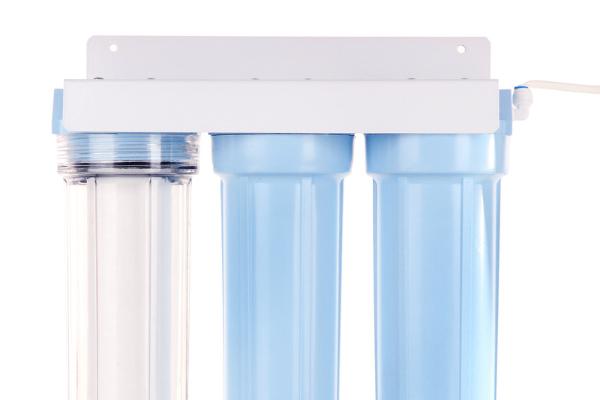
Do You Need Help Getting Rid of Radium in Your Water?
If you live in Chicagoland, you probably have radium in your water supply, but you have the power to remove it! Installing an NSF 58-certified RO system or NSF 44-certified water softener might be a potent option for you.
We provide effective water softeners and RO systems, among other devices, that can keep your water healthy. Our expert staff is always happy to chat about which one suits your needs best. You’re nothing more than a phone call away from healthier water for your whole family.
Please call us at 847-382-7800 to talk about RO systems and water softeners with an expert.
Interested in a Water Softener System for Your Home?
You don’t have to live with a dry, itchy scalp and brittle hair anymore! It would be our pleasure to help you find the right water softener to make your showers enjoyable again.
Please give us a call at (847) 382-7800 or visit our water softener page to learn more.


